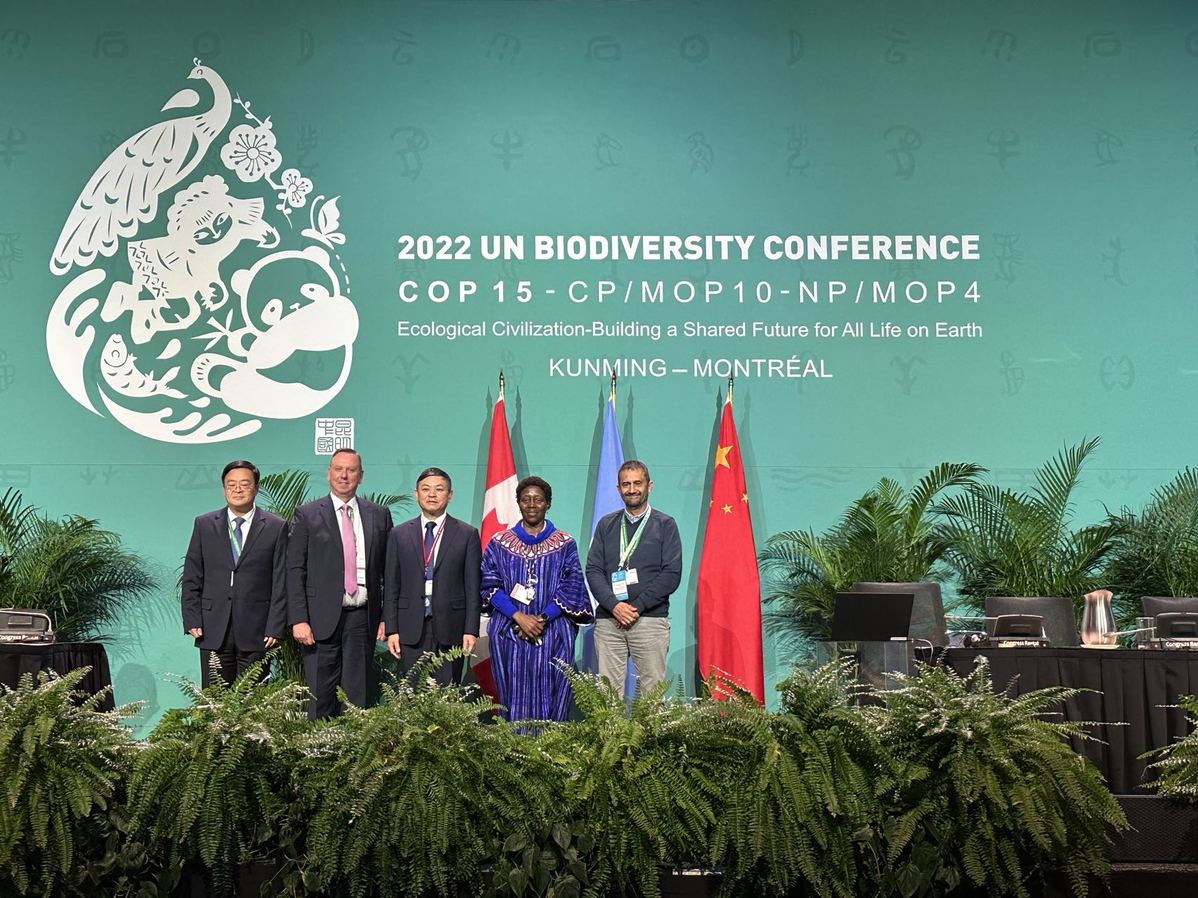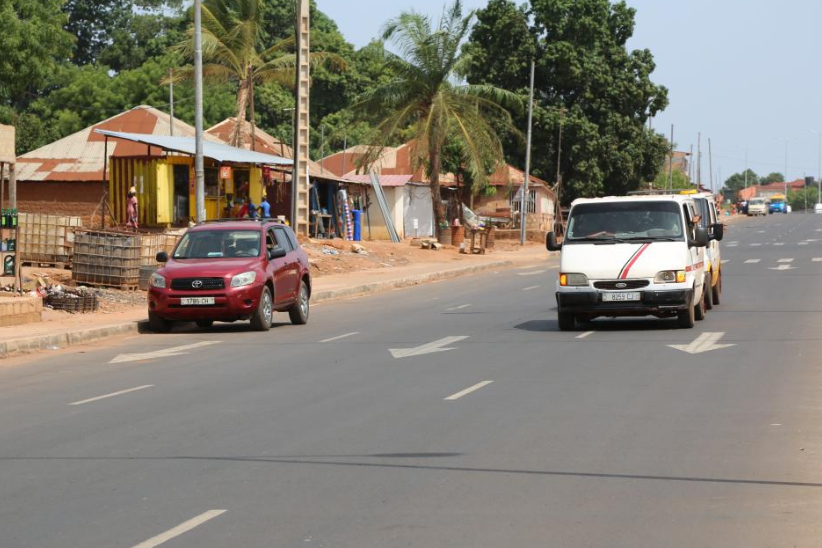COP15: China's subnational governments' role highlighted


The role that China's regional governments and local authorities play in boosting biodiversity was highlighted at the United Nations' COP15 on Tuesday.
As front-line guardians and local practitioners of biodiversity, subnational governments and cities have always played key roles in the process of global biodiversity governance, said Huang Runqiu, the president of the 15th Conference of the Parties (COP15) and China's minister of ecology and environment.
"How to strengthen close collaboration with the governments of the parties to the CBD (Convention on Biological Diversity) and jointly promote the implementation of global goals and national strategies at the local and city level is a difficult problem that requires us to pool our wisdom and solve together," Huang said.
China is committed to creating livable cities where people and nature coexist, he said. By enhancing urban planning, construction and governance, the country will continue to improve the standard of urban ecological construction, he said.
Take Chengdu, the capital of Sichuan province, as an example. The city's Longquan Mountain Urban Forest Park, spanning around 1,275 square kilometers, is the largest of its kind in the world. The city's green-coverage rate has reached 43.88 percent, Huang said.
Shanghai, a megacity of China, has continued to explore the best practices of integrating urban development and nature, Huang said. It has incorporated the concept of harmonious coexistence between humans and nature into the update of its central urban area and the construction of the five "new cities" in its suburbs.
In the past decade, the number of parks in Shanghai has increased from 153 to 532, and the number of trees on the streets has grown from 925,000 to more than 1.45 million. The per capita green area of parks is 8.8 square meters, and the forest coverage rate has reached 19.42 percent, he said.
Huang spoke during the seventh Summit for Subnational Governments and Cities, a parallel event of COP15, which congregated subnational and local government leaders to discuss strengthened actions to protect biodiversity. The summit took place Dec 11-12.
Among the speakers was Kunming Mayor Liu Jiachen. He noted that Kunming was the first Chinese city to sign the Edinburgh Declaration, which calls on the parties to the CBD to recognize the vital role of regional, city and local governments in implementing the post-2020 Global Biodiversity Framework.
Kunming, located in Yunnan province in Southwest China, has established many nature reserves, such as the Wildlife Park and the ecological corridor, he said.
Many endangered birds and fish have been "reborn" in Kunming, including the golden-line barbel, which is only found in Yunnan's Dianchi Lake.
Due to various factors such as overfishing, reclamation of land from lakes, and water pollution, the fish disappeared from the lake in 1986 and only a small amount were found in streams entering the lake and in Longtan.
But research by Chinese scientists and the success of artificial breeding in 2007 brought back the fish and significantly enhanced the fish's population. It is the third fish variety under state protection in China after the Chinese sturgeon and cochineal fish.
Noting that Kunming is building a "center of excellence" in cooperation with ICLEI, an international non-governmental organization and the organizer of the summit, Liu said Kunming is willing to work closely with cities around the world to strengthen local governments' commitment to biodiversity.
Wen Zhong, deputy director-general of the Shenzhen Municipal Ecology Environment Bureau, who spoke at the summit, shared how the city, a major manufacturing hub and financial city in South China, balances economic development and ecological protection.
"Shenzhen adheres to the concept of ecological priority and green development. We promote urban biodiversity protection and strive to live in harmony with nature," Wen said.
In 2005, 50 percent of the city's urban area was put under ecological protection. The city has a forest coverage rate of 39 percent, he said. Its downtown area is the home to a national nature reserve, which is the stopover for about 100,000 migratory birds flying between Asia and Australia every year, he said.
The 14th Meeting of the Conference of the Contracting Parties to the Ramsar Convention on Wetlands announced the establishment of an international mangrove center in Shenzhen to contribute more to mangrove conservation.
The city also has set up 38 nature education centers and 22 nature schools, which conduct a variety of educational activities for the public every year, he said.
Elizabeth Maruma Mrema, executive secretary of the UN Convention on Biological Diversity, told the summit at its closing ceremony Monday night that she was "very pleased" with the ambitious ideas and actions highlighted by the speakers.
During Tuesday's "China Day" event for subnational governments and cities, another side event organized by ICLEI, or Local Governments for Sustainability, Mrema praised the "amazing mobilization" of the Chinese cities and provinces in her opening remarks.
"Today, we will witness exchanges between the Chinese experts, agencies, local and subnational governments and their partners globally. We will see Chinese cities being recognized for their leadership and announce their flagship initiatives," she said.
Gino Van Begin, secretary general of ICLEI, also praised Chinese cities for their "innovative approach" to conservation. He said ICLEI has worked closely with Chinese member cities, including Chengdu, Hong Kong and around 30 other partner cities in different projects through its Beijing ICLEI office.
He noted that the ICLEI Kunming "center of excellence" is "a strategic contribution to the implementation of the goals of the Global Biodiversity Framework".
"I believe the ICLEI Kunming joint center will become a very powerful hub and a bridge for peer learning between local and subgovernments from China and the rest of the world," he said.
ICLEI is a network of more than 2,500 member cities and regions around the world that promotes sustainable development.
teresaliu@chinadailyusa.com

































